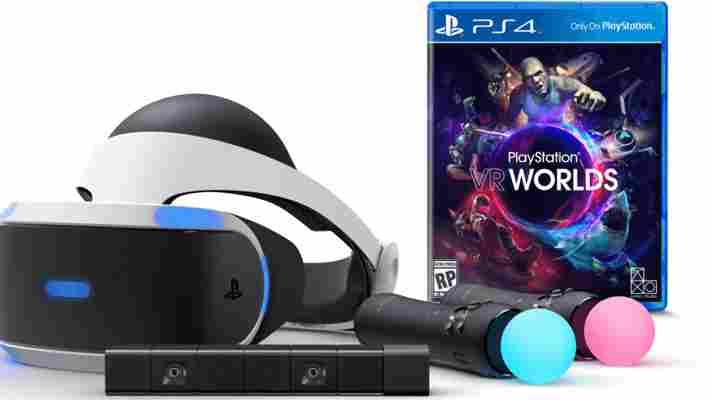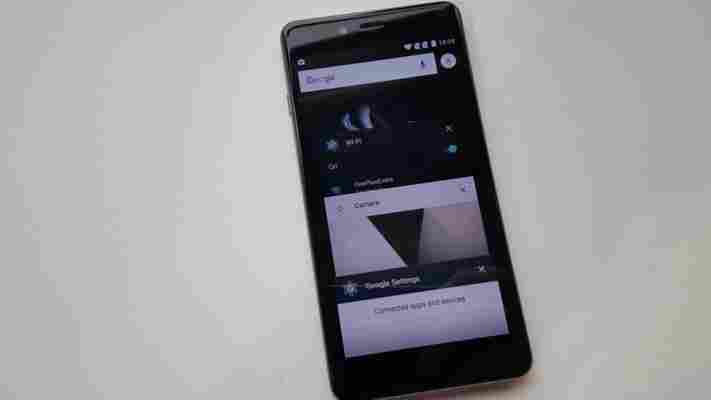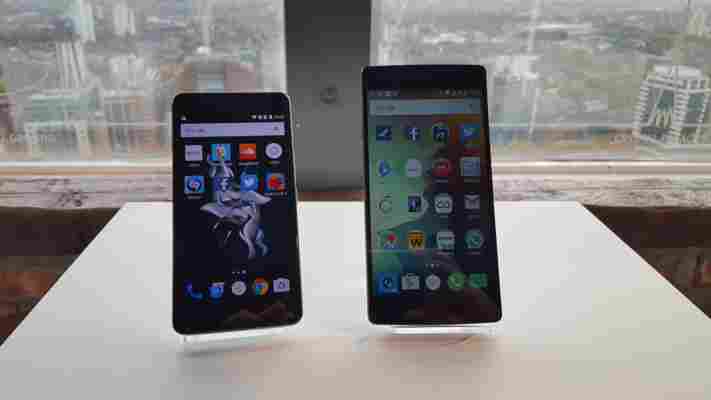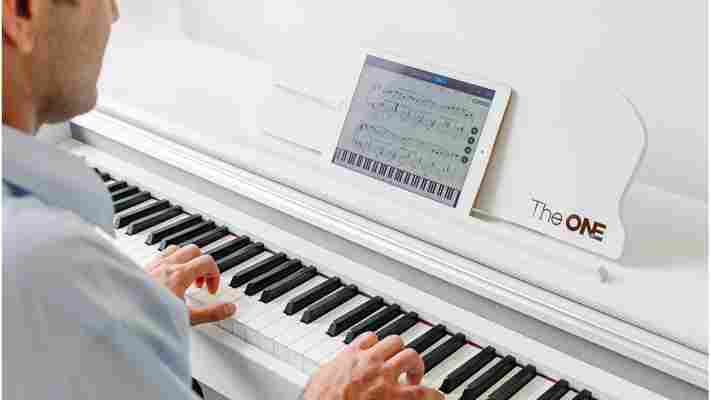Sony announced that its much anticipated PlayStation VR headset will be available in stores from October for $399 earlier this week. What it left out of that announcement was the fact that anyone hoping to use the VR headset would need to already own a PlayStation camera that’s required for it to work and Move controllers or buy them for an additional cost.

Following some criticism for omitting the total tally, Sony has revealed that it will be releasing a PlayStation VR bundle with everything a user needs to get started (except an actual PlayStation, of course).
The bundle will go be available to preorder for $500 on March 22 and includes the VR headset, two Move motion controllers, the PlayStation camera and a demo disc of various VR games to get started.
While you’ll still need a PlayStation console to get started, it seems likely they will announce a megabundle that includes one before the launch; especially since October is prime time for holiday shopping and Sony will want to make sure it beats Xbox in sales figures again this year.
➤ PlayStation VR Launch Bundle Pre-Orders Start Tuesday [Sony]
Hands-on with the OnePlus X: You might buy it, but it won’t be much to do with the phone
By this point, OnePlus is known for its irritating invite system, and shouting about how great its phones are , even if in reality they perform distinctly averagely.

Today, the company launched a new device – an even cheaper one, that takes a different design approach to the OnePlus One and OnePlus 2 to reduce the overall footprint of the device without reducing the screen size by too much.
Key hardware specs include a 5-inch full HD 441PPI display, 16GB of on-board storage (with microSD support), 3GB RAM and a 2.3GHz quad-core Snapdragon processor. There’s a hardware mute switch on the left side, and volume rockers on the right.
On the rear, there’s a 13-megapixel sensor with a wide f/2.2 aperture. On the front, there’s an 8-megapixel shooter for the obligatory selfies and the odd video call.
Distinctly middle-of-the-road specs aside, the biggest transformation for the OnePlus X is the design.
Where it used to carry an overly large chassis, with a curved rear that felt a bit like sandpaper , seeing a slimmer, more ‘premium’ looking device is a welcome change, even if it does look slightly more ‘generic’ as a result.


There are two models – one with the back finished in Onyx black glass and another limited edition Ceramic model, which carries a slightly higher price tag.
“Today’s smartphone user strives to find the perfect balance of style and performance. The OnePlus X is a design-centric device – chic and powerful enough to fit any lifestyle,” OnePlus co-founder Pete Lau says.
In the short time I tested the device, I could work out that it didn’t seem to struggle with switching between apps, the 1080p, 441PPI screen was bright and reproduced colors well. It wasn’t in bright sunlight though, so we’ll have to see how it performs there.
The rear-facing camera took snaps quickly and there was virtually no delay between hitting the shutter button and the picture being taken.
In my hand, I found it slightly square, though the slightly chamfered edging helps reduce that feeling a little.
I didn’t specify any difference between the glass and the ceramic rear-panelled models for a reason – it’s almost impossible to really tell them apart. Genuinely, the easiest way I found to know which was which was by seeing which collected the most fingerprints – the ceramic.
Lau says that the manufacturing process for the ceramic model is so precise that only 20 rear covers out of 100 reach an acceptable quality for use in a phone.
Under the bonnet, it runs OnePlus’ customized OxygenOS version of Android – based on Lollipop.
With such a short amout of time playing with the phone, it’s obviously hard to say how well it performs. But to me, that’s not really the point, this phone isn’t for the average consumer on the street – not least of all because you can’t walk into a shop and buy one.
That leaves OnePlus’ target market for the X as the same market as its previous two devices – and indeed, people who either liked the first model or didn’t quite get around to buying one will probably be interested by this version.
The average person on the street probably won’t be though – it’s an unknown brand (to them), with online-only sales. They’d probably have questions about customer support too, given that OnePlus is based in China.
The problem for OnePlus, then, is how to escape its frenzied fans and make it into the mainstream. Perhaps it doesn’t even want to – from the start, OnePlus has said it doesn’t care about markets, and only about users. Pei reiterated this at the OnePlus X launch:
With the invite system once again in place for the OnePlus X, at least initially, the company is looking to appeal to a limited, relatively small pool of people who care enough about cold specs and a ‘noble mission’ – most likely ones that already knew the brand name.
Perhaps the best thing going for the OnePlus X right now is the price – £199 (around $300 as a straight conversion) for the glass-backed version and £269 ($410) for the ceramic version – but that won’t matter to OnePlus fans. They’ll just be excited to get a new phone to wait for – the first handsets are due to ship November 5.
➤ OnePlus X [OnePlus]
The ONE Smart Piano could make learning to play much more fun
When I was six years old, one of the ways I amused myself was to sit down at the baby grand piano in the living room and tap out tunes I heard on the radio. In response, my parents embarked on a six-year run of piano lessons.

While I eventually warmed to the disciplined practice required, once the lessons ended, I never touched the piano again. Research indicates that, like me, some 50 percent of American kids took piano lessons, but only 12 percent play as adults.
That is the impetus behind today’s North American launch of the ONE Smart Piano and Keyboard, alongside a crowdfunding campaign for $50,000 that kicks off simultaneously on Indiegogo . The piano is already available in China.
This electronic instrument, combined with a free mobile apps for iOS and Android , seeks to make playing the piano more fun and less structured, both for newcomers and people who may have abandoned it in the past.
“We wanted to create a fun way not to push the instruments on you but to let you play your favorite pop songs,” said Matthew Layne, The ONE Music Group’s partner relations manager.
The ONE Smart Piano is a genuine piano — a traditional digital upright with a wooden body that’s MFi certified to work with Apple mobile devices. It features 88 hammer-action, simulated ivory, full sized weighted keys and three foot pedals in a simple, Bauhaus-inspired frame. At 121 pounds, it is one-fourth the weight of traditional uprights and measures 54 x 18 x 33 inches.
The instrument comes in two models, a handsome upright in Matte black or Classic white, which would look lovely in any home. There’s also a portable ONE Light keyboard, with 61 keys and weighing 11 pounds, powered by six AA batteries. It features a microphone plug-in and comes in Onyx Black and White Gold. Both have built-in stands so you can plug in a smartphone or tablet.
The ONE Smart Piano is a genuine piano — a traditional digital upright with a wooden body that’s MFi certified to work with Apple mobile devices. It features 88 hammer-action, simulated ivory, full sized weighted keys and three foot pedals in a simple, Bauhaus-inspired frame. At 121 pounds, it is one-fourth the weight of traditional uprights and measures 54 x 18 x 33 inches.
You do not need to run any apps on the piano while you play: You can sit down and play by ear — just as I used to. But if you want to learn songs and enhance your skills, the companion app can get you started.
It lets you learn at your own pace and choose the songs you want to play, while providing lighting hints on the keys to assist in getting the right notes. You can also record the songs you learn and share them with others. Included sheet music covers a variety of music genres, and even teaches you to read music at your own pace. Because it’s electronic, the piano never needs tuning.
The app is designed to deliver an integrated experience. “We are a tech company, and when we upgrade the app, we incorporate teacher suggestions, and other updates. You never have to buy a new piano,” Layne said.
Both pianos also work with third-party music apps including Apple Music, Spotify, YouTube, and others to play music directly from the instrument’s built-in MP3 speakers. And, as MIDI input systems, they can be used with music creation tools like GarageBand.
While ONE Smart Piano is a consumer product strictly for entertainment, you can easily transfer the skills you learn from it to a regular piano if you want to further advance your musical expertise.
The Indiegogo campaign , which accompanies the company’s North American launch, is designed to raise awareness of the company and its mission to update musical instruction. The funds will be used to offset shipping costs to help keep prices reasonable.
The campaign also has a strong community component. Funders can choose to help advance classroom music for nonprofits with a ‘Buy The ONE, give one’ program. Current partners include Open Mind School for special needs children and Senior Planet, which both use the smart pianos for education and recreation.
The upright models cost $1,499, while the keyboard is $300. The company is offering a limited-time discount on Indiegogo, starting at $899 for the upright model and $199 for the keyboard for the earliest funders.
Both pianos are already in production and are scheduled to ship by September.
➤ One Smart Piano
